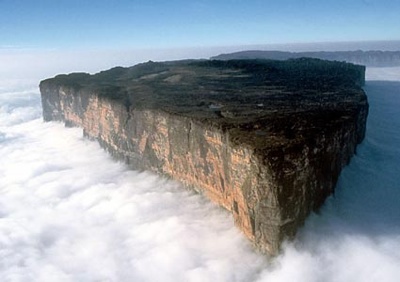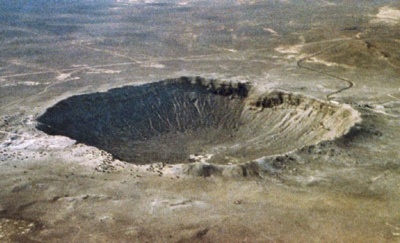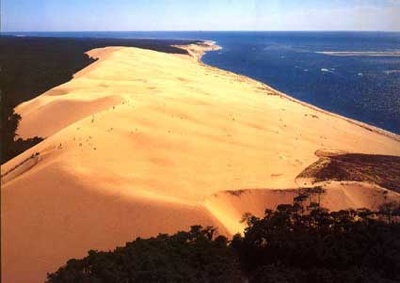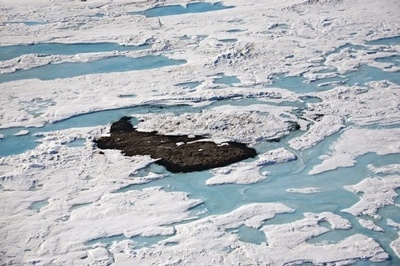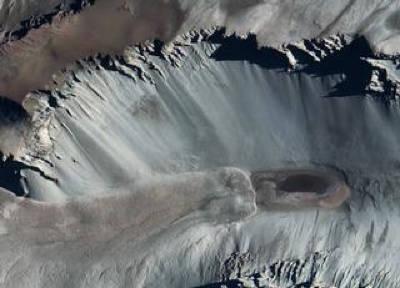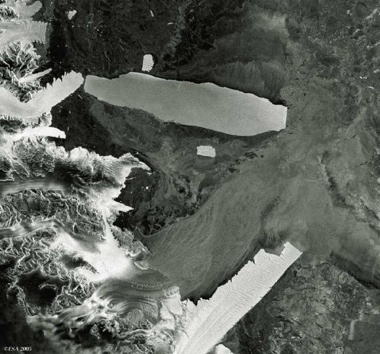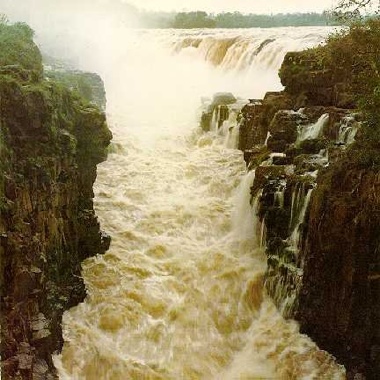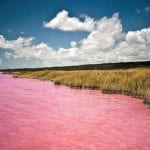 Weird Stuff
Weird Stuff  Weird Stuff
Weird Stuff  Mysteries
Mysteries 10 Tragic Disappearances and Deaths in Joshua Tree National Park
 History
History 10 Ways Childhood Really Sucked in the Old West
 Music
Music 10 Name Origins of Famous Bands from the 1990s
 Religion
Religion 10 Biggest Turnarounds by the Catholic Church
 Weird Stuff
Weird Stuff 10 Unbelievable Times Laws Had Unintended Consequences
 Humans
Humans Ten Historic Women Who Deserve Way More Credit Than They Got
 Movies and TV
Movies and TV 10 Films That Spawned Major Lawsuits
 History
History Ten Times Towns Were Wiped Off the Face of the Earth
 Creepy
Creepy 10 of the Most Disturbingly Haunted Public Houses in the UK
 Weird Stuff
Weird Stuff 10 Niche Subcultures That Are More Popular Than You Might Think
 Mysteries
Mysteries 10 Tragic Disappearances and Deaths in Joshua Tree National Park
 History
History 10 Ways Childhood Really Sucked in the Old West
Who's Behind Listverse?

Jamie Frater
Head Editor
Jamie founded Listverse due to an insatiable desire to share fascinating, obscure, and bizarre facts. He has been a guest speaker on numerous national radio and television stations and is a five time published author.
More About Us Music
Music 10 Name Origins of Famous Bands from the 1990s
 Religion
Religion 10 Biggest Turnarounds by the Catholic Church
 Weird Stuff
Weird Stuff 10 Unbelievable Times Laws Had Unintended Consequences
 Humans
Humans Ten Historic Women Who Deserve Way More Credit Than They Got
 Movies and TV
Movies and TV 10 Films That Spawned Major Lawsuits
 History
History Ten Times Towns Were Wiped Off the Face of the Earth
 Creepy
Creepy 10 of the Most Disturbingly Haunted Public Houses in the UK
10 Unique And Amazing Places on Earth
After seeing “10 More Amazing Wonders of the Natural World”, which many contained places I had never even heard of, I was inspired to make my own list. This list differs from the previous in that it contains things which may not be stunning to behold, but are unique for their size, location, or natural impact.
The Door to Hell, as local residents at the nearby town of Darvaza have dubbed it, is a 70 meter wide crater in Turkmenistan that has been burning continuously for 35 years. In 1971, geologists drilling for gas deposits uncovered a huge underground cavern, which caused the ground over it to collapse, taking down all their equipment and their camp with it. Since the cavern was filled poisonous gas, they dared not go down to retrieve their equipment, and to prevent the gas escaping they ignited it, hoping it would burn itself out in a couple of days. Unfortunately, there was a slight miscalculation as to the amount of gas that was trapped, and the crater continues to burn to this day.
You can see it on Google Earth at 40°15?8?N 58°26?23?E
Mount Roraima is a pretty remarkable place. It is a tabletop mountain with sheer 400-metre high cliffs on all sides. There is only one ‘easy’ way up, on a natural staircase-like ramp on the Venezuelan side – to get up any other way takes and experienced rock climber. On the top of the mountain it rains almost every day, washing away most of the nutrients for plants to grow and creating a unique landscape on the bare sandstone surface. This also creates some of the highest waterfalls in the world over the sides (Angel falls is located on a similar tabletop mountain some 130 miles away). Though there are only a few marshes on the mountain where vegetation can grow properly, these contain many species unique to the mountain, including a species of carnivorous pitcher plant.
Meteor Crater is a meteorite impact crater located approximately 43 miles (69 km) east of Flagstaff, near Winslow in the northern Arizona desert of the United States. Because the US Department of the Interior Division of Names commonly recognizes names of natural features derived from the nearest post office, the feature acquired the name of “Meteor Crater” from the nearby post office named Meteor. The crater was created about 50,000 years ago during the Pleistocene epoch when the local climate on the Colorado Plateau was much cooler and damper. At the time, the area was an open grassland dotted with woodlands inhabited by woolly mammoths, giant ground sloths, and camels. It was probably not inhabited by humans; the earliest confirmed record of human habitation in the Americas dates from long after this impact. The object that excavated the crater was a nickel-iron meteorite about 50 meters (54 yards) across, which impacted the plain at a speed of several kilometers per second.
Since Europe has no deserts, you’d think the title of “Europe’s largest sand dune” would go to something that wasn’t particularly impressive. But you’d be wrong. The Great Dune of Pyla is 3km long, 500m wide and 100m high, and for reasons I will probably never understand, it seems to have formed in a forest. The dune is very steep on the side facing the forest and is famous for being a paragliding site. At the top it also provides spectacular views out to sea and over the forest (since the dune is far higher than any of the trees surrounding it).
Socotra has been described as one of the most alien-looking place on Earth, and it’s not hard to see why. It is very isolated with a harsh, dry climate and as a result a third of its plant-life is found nowhere else, including the famous Dragon’s Blood Tree, a very-unnatural looking umbrella-shaped tree which produces red sap. There are also a large number of birds, spiders and other animals native to the island, and coral reefs around it which similarly have a large number of endemic (i.e. only found there) species. Socotra is considered the most biodiverse place in the Arabian sea, and is a World Heritage Site.
This is more of a curiosity and not visually impressive, but 83-42 is believed to be the northernmost permanent point of land on earth. It is tiny, only 35m by 15m and 4m high, but is about 400 miles from the north pole. It beat the previous record holder, ATOW1996, when it was discovered in 1998, and lichens were found growing on it, suggesting it was not just one of the temporary gravel bars that are found in that region, which are regularly pushed around by the rough seas. The picture above features what is currently the northernmost point on land, one of the temporary gravel bars, photographed in 2007, as I could find no photos of 83-42 (For some reason, nobody feels the need to produce a photograph of a tiny rock in the middle of nowhere, which only five people have ever stepped foot on).
Rotorua is a city on the southern shores of the lake of the same name, in the Bay of Plenty region of the North Island of New Zealand. The city is known for its geothermal activity, with a number of geysers, notably the Pohutu Geyser at Whakarewarewa, and boiling mud pools (pictured above) located in the city. This thermal activity owes itself to the Rotorua caldera on which the city lies. Rotorua is also a top adventure destination and is New Zealand’s Maori cultural heartland. Rotorua city is renowned for its unique “rotten eggs” aroma, which is caused by the geothermal activity releasing sulphur compounds into the atmosphere. If you are ever visiting New Zealand – this is a city you must see. It was once home to the famed Pink and White Terraces and you can visit thermal wonderlands with sights that are truly astounding.
With a salinity of over 40%, Don Juan Pond is the saltiest body of water in the world. It is named after the two pilots who first investigated the pond in 1961, Lt Don Roe and Lt John Hickey. It is a small lake, only 100m by 300m, and on average 0.1m deep, but it is so salty that even in the Antarctic, where the temperature at the pond regularly drops to as low as -30 degrees Celsius, it never freezes. It is 18 times saltier than sea water, compared to the Dead Sea which is only 8 times saltier than sea water.
Iceberg B-15 was the largest ever recorded iceberg. It had an area of 3,100 km², making it larger than the island of Jamaica, and was created when part of the Ross Ice Shelf broke off in March 2000. In 2003, it broke apart, and one of the larger pieces (called B-15a) drifted north, eventually smashing into a glacier in 2005, breaking off an 8-km² section and forcing many antarctic maps to be rewritten. It drifted along the coast and eventually ran aground, breaking up once again. In 2006, a storm in Alaska (that’s right, Alaska) caused an ocean swell that travelled 13,500km, over 6 days, to Antarctica and broke up the largest remaining part even more. Almost a decade on, parts of the iceberg have still not melted, with the largest remaining part, still called B-15a, having an area of 1,700 km². The picture above shows B-15a (top left) in 2005, after drifting west into the Drygalski Glacier (bottom), breaking the end off into several pieces.
Located on the Parana river the Guaíra Falls were, in terms of total volume, the largest waterfall on earth. 1,750,000 cubic feet of water fell over this waterfall each second on average, compared to just 70,000 cubic feet per second for Niagra Falls. However, the falls were flooded in 1982 when a dam was created to take advantage of this massive flow rate. The Itaipu Dam is now the second most powerful hydroelectric dam in the world, after the Three Gorges Dam. The Itaipu Dam supplies 90% of the power consumed by Paraguay, and 19% of the power consumed by Brazil, including Rio de Janeiro and São Paulo.
